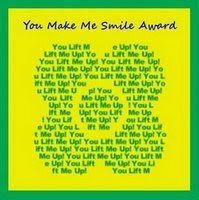It caught my eye because one of my biggest peeves, one of the things that annoys me the most in life, are those people who chew their gum for everyone else's enjoyment. And guess what - they are clueless about it, or just that rude !!
There are some good factoids in this piece.
WOW !! I had no idea how much sugar is in chewing gum.
Think of the possibilities of re-marketing... "green" chewing gum - totally re-usable (read recyclable - but some of already knew that.. remember ABC gum ? *grin*). Kinda makes one wonder how much is in landfills, on the roads, under tables/chairs/desks, and how long does it take for this stuff to breakdown.
~~~~~~~~~~~~~~~~~~~~~~~~~~~~~~~~~~~~~~~~~~~~~~~~~
| The Ottawa Citizen |
Sunday, April 01, 2007
|
The average American munches more than a pound of gum every year. What is it that we put in our mouths when we chew a stick of gum?
The original chewing gum is a natural product. It is made from a rubbery compound called chicle that comes from the sapodilla tree. If you are an adventurous sort of person, you could fly down to Guatemala or Mexico, hike into the rainforest, find a sapodilla tree and cut into the bark. A rubbery sap would ooze out, and this is the base for natural chewing gum. In the same way that you could chew on a rubber band all day long without it disappearing, you can chew on chicle all day long. Chicle is a natural rubber.
In the late 1800s, people discovered that you can flavour chicle. You take a chunk of chicle, heat it up a bit to melt it, and then start mixing sugar and flavors into it. Peppermint extract is one common flavor. You can actually buy kits today that contain a bar of chicle rubber, a bag of powdered sugar and some flavoring. You heat up the chicle in the microwave oven and knead the sugar and flavor in to make your own gum. It takes about half an hour.
A typical piece of chewing gum is more than half sugar. This is easy to prove if you have a scale that can measure grams. You take a piece of gum and weigh it. Then you chew it for 5 or 10 minutes until all the sweetness is gone. If you dry it off and weigh it again, the piece of gum will weigh half as much (or less) as it did to begin with. What is left is the rubbery gum base. You could actually save old gum and re-flavour it. It's totally re-usable. Like rubber bands or rubber tires, chicle lasts a long time.
Chicle is very temperature-sensitive. If you freeze chicle with ice, it gets hard. At room temperature it is still stiff -- you can break it. At body heat it is soft and very stretchy. In boiling water it gets syrupy. It is one of those happy accidents that chicle is the perfect consistency for chewing at the natural body temperature of human beings.
This rubber has been used in lots of different ways. Wrigley's Juicy Fruit gum got its start in 1893. Dentyne gum appeared in 1899. The name is a combination of "dental" and "hygiene". The idea was to create a cinnamony gum to keep your breath fresh and your teeth clean. This, of course, predated the idea that sugar rots your teeth. Then in 1928 the big break came -- bubble gum, invented by a man named Walter Deimer and sold as Double Bubble gum.
The only problem with chicle is that there isn't enough of it to go around. So, starting around World War II, science stepped in to solve the problem. Today just about every piece of chewing gum on the market contains an artificial gum base instead of chicle. The gum base is just like any other plastic or synthetic rubber in use today. It starts with some sort of petroleum product that gets modified through a series of chemical reactions. The goal is to create a tasteless, artificial rubber that has the same kind of temperature profile and consistency as natural chicle.
So why do people like gum so much? It turns out that moving our jaws up and down actually makes people feel better. Since WWI the U.S. army has been giving gum to soldiers because it seems to ease stress. Truck drivers find that chewing gum can help them stay awake and be more alert. Studies in the last few years have shown that chewing gum may even help memory recall.
(c) 2007 How Stuff Works Inc. Distributed by McClatchy-Tribune Information Services.


















No comments:
Post a Comment